Cat Care 101: How To Take Care Of A Cat For Beginners
Looking to know how to take care of a cat for the first time? Or maybe you just want to know how to improve and be a better cat servant? Good for you!
Owning any pet is an added responsibility in life, but can truly be a rewarding one.
Cats are known for being lower maintenance than dogs but let’s be honest, cats are actually high maintenance. After all, they are ancient royalty you know! With their regal attitudes and demands from their humans, our feline friends can be entertaining and fun to frustrating and mischievous.
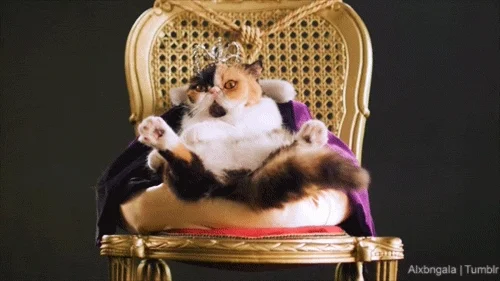
Either way, all cat people will tell you that they are worth it!
Come one, come all first-time cat owners! This article will dive into all the necessary facts and products that are needed to help take care of and keep your furry feline happy and healthy. Making sure that kitty has the best food, toys and perches available will ensure your cat is content.
Below we will discuss a multitude of information regarding caring for your cat, such as:
- Cat essentials: litter box, food and treats
- Caring for all life stages of your cat: kitten to geriatric
- Cat hygiene: brushing coat and teeth, trimming nails
- Cat safety: indoor vs outdoor
- Enrichment: toys and cat condos
There are even more tips and tricks to come so keep reading to get the full scoop on what is best for your cat!
Disclaimers
catsandkittensworld uses affiliate links and we may earn a commission if you purchase through one of our links. This makes the site possible to maintain, thank you. Also, the information on catsandkittensworld.com is purely informational and should not be considered medical advice. If your pet has any medical issues please consult a professional.
Related articles
- What I wish I knew Before Getting A Kitten – 3 Mistakes to Avoid.
- How To Catify Your Apartment With Space Saving Furniture [13+ Options For All Budgets]
- What Do Cats Like To Eat For Breakfast? More Than Just Giving Them Cat Food!
- Finding The Perfect Feline: Male VS Female Cats – Is One Gender More Affectionate?
- How Many Cats Is Too Many In An Apartment? Would Your Cats Be Happy?
- 5 Pros And Cons Of Getting Two Kittens [ Will You Regret It?]
How To Take Care Of A Cat – The Essentials
The essentials to your cats are probably going to be food, treats and cuddles (on their time, of course), but I’ll go ahead and include the litter box too. Wondering what kind of diet and snacks to feed them as well as what kind of box they should use is a pretty typical question for new cat owners. Below is an image of the most essential items that you should purchase when first getting a cat.

Diet
There are so many diets on the market for pet food, it’s beyond confusing for a new owner. Thankfully, there is a slightly smaller number of cat food available. When it comes to choosing a food, the most important thing is to consider their lifestyle and age.
Cats are also what is called “obligate carnivores” meaning that they must have meat in order to survive. They cannot eat a strictly vegetarian or vegan diet, they will eventually die from a diet that lacks the appropriate nutritional value a cat needs.
Feeding a balanced and complete diet should eliminate the need for you to provide supplements to your cat. Adding too much to their regular meals can cause stomach upset.
Dry Kibble
A dry form of cat food is typically what is recommended by veterinarians. While it may be dry, it does contain about 6% moisture and the crunchiness helps to break down plaque build-up on their teeth. Dry food also allows for owners to “free feed” and leave their meals out all day as they choose to graze periodically.
Please do not confuse dry cat food with something that is cheap or unhealthy. According to vets, these diets are well balanced and should be considered first before the semi-moist or canned variety of foods.
Semi-moist or Canned Food
These types of cat diets are certainly going to be stinkier and messier than your dry cat food, but the kitties do love it. Especially the canned food, many cats enjoy licking the gravy or juice first, then digging into the rest. While the canned cat food and semi-moist do tend to be more palatable than the dry, they are much more expensive per pound.
These wet forms of cat food also have a shorter shelf life and cannot be left out for more than 30 minutes. These do not have the added convenience of being able to free feed your cat and allow them to graze as they want.
Soft and canned diets also are not as good for their teeth, as they do not have any crunchy pieces that help debride away plaque build-up. Many cats will gain a lot of unnecessary weight as a result of eating a canned or soft variety as well.
Choosing A Complete and Balanced Diet
The first step in choosing a diet is to ensure that it has been tested and approved through AAFCO (Association of American Feed Control Officials) standard and that they deem it to be balanced and complete.
Also, choose a brand that is reputable and backs up their food standards with real data, PLUS recognized by AAFCO and USDA as complete and balanced. You wouldn’t want food based on a trend or fad in the media marketplace either. Diets that are ‘grain free or soy free’ are not ideal and should be avoided as there is research showing it is linked to heart disease later in life.
Over the counter diets that are recommended most by veterinarians are:
While there are tons of options out there, these tend to be the brands that are older and more trusted among veterinary professionals. It is of course fine to feed them something else that you have done your research with that you find complete and balanced for your kitty.
Treating Your Cat To Something Special
Giving your cat treats is something that is fun and rewarding for both of you. Your cat loves it and loves you more for it. However, treats are not nutritionally balanced and are typically higher in calories than their traditional cat food, so they should be fed to your feline friend in moderation.
The typical rule of thumb is that treats should only be about 10 to 15% of their daily caloric intake. Less is definitely more when it comes to giving your cat something fun and tasty, as kitties are prone to becoming overweight or obese which can potentially lead to issues, such as diabetes and joint pain later on.
Catnip! Cat’s love this stuff, well most of them, purchasing it at the pet store is good but growing it yourself is even better. Watching your cat enjoy some nip while playing and rolling around can be a lot of fun!
What’s The Scoop On Litter Boxes
Just like with food, there are tons of options available for litter boxes too.
Do you want one that scoops itself?
One with a hood?
One with pads or large pellets instead of clay litter?
Or do you want to train your cat to use the toilet?
When you are a first-time cat owner it may take a moment to decide what fits your lifestyle and your house better.
I personally love the Breeze Litter Box System because it makes cleaning up after my cats so easy. Plus, I love how much less the house smells like cat pee and poop. The Breeze box has a pad underneath in its own compartment where all the urine runs into and the poo stays on top of the large pellets. The pellets make for easy cleanup and there is not a bunch of sandy litter all over the floor to step on.
Don’t get me wrong! Traditional litter boxes with clay litter are absolutely fine, but recently owners have been looking into alternative forms of boxes for their kitties to go number 2 in.
Take the Citti Kitty for instance. This is a kit you can find on Amazon that goes on your toilet seat and has a set of rings that you take away as your cat gets more used to this non-traditional type of litter box system. Eventually, your cat learns to only use the human toilet, making your job of cleaning the litter box… well, nonexistent! But you do have to share the bathroom with your cat now.
A rule of thumb with cats and the number of litter boxes you should have in your home is one per cat plus an extra.
How To Take Care Of A Cat For All Life Stages

Just like with people, animals have different nutritional requirements and lifestyles depending on their age. Young cats will be seen running around and being more mischievous, while older cats can be found sleeping more and relaxing.
This category will help you understand what changes may need to be made as your feline friend grows up.
How To Care For A Kitten
Kittens; little adorable trouble makers and chewers of charging cords. They enjoy playing and being rambunctious while also being the center of attention. These fluffy little kiddos can bring a lot of entertainment and action to a household.
1.Bring On The Fun!
Having a lot of stuff for kittens is a must to keep them out of trouble. These young kitties require lots of toys and distractions so they aren’t destroying important things in your home. They should have several vertical spaces for them to climb and play on, such as cat trees, pet condos or wall-mounted cat furniture.
2.Kitten Food
A young cat will require more calories and protein than an older and less active feline. Feeding them a kitten food until they are at least a year old is necessary for ensuring that they meet the appropriate nutritional requirement to grow up healthy and strong.
3.Veterinary Care
Disclaimer: Remember this is not medical/veterinarian advice for your kitten, please visit your veterinarian to make any diagnosis and treatment your kitten(s) may need
When a cat is a kitten, taking them to the vet for their vaccinations and to have them spayed or neutered is extremely crucial. All kittens will require 3 rounds of vaccinations from the ages of 8 to 16 weeks. Having them tested for Feline Leukemia and Feline Aids prior to introducing them to other cats in the household is extremely important as well. You don’t want to bring in potentially dangerous conditions to your healthy cats at home.
According to my veterinarian technician experience, Kittens should receive 3 FVRCP, 2 Feline Leukemia and 1 Rabies vaccination. These should be updated YEARLY.
FVRCP covers Feline Viral Rhinotracheitis, Calicivirus and Panleukopenia. And Leukemia and Rabies only cover what is in their name.
Having your cat spayed and neutered in order to prevent more unwanted kittens should be a standard procedure that is performed around 4 to 6 months of age.
Not only will keeping your cat unaltered cause unwanted behaviors like urinating in the house and over vocalization but they will be prone to running away and being destructive. Female cats also run a risk of developing a uterine infection called a pyometra which is an expensive and completely preventable emergency.
Note: If you want to know more about kittens, check out these articles:
- Will Two Kittens Bond With Me? 10 Bonding Tips You Need To Know
- 5 Pros And Cons of getting two kittens [Will you regret it?]
How To Care For An Adult Cat
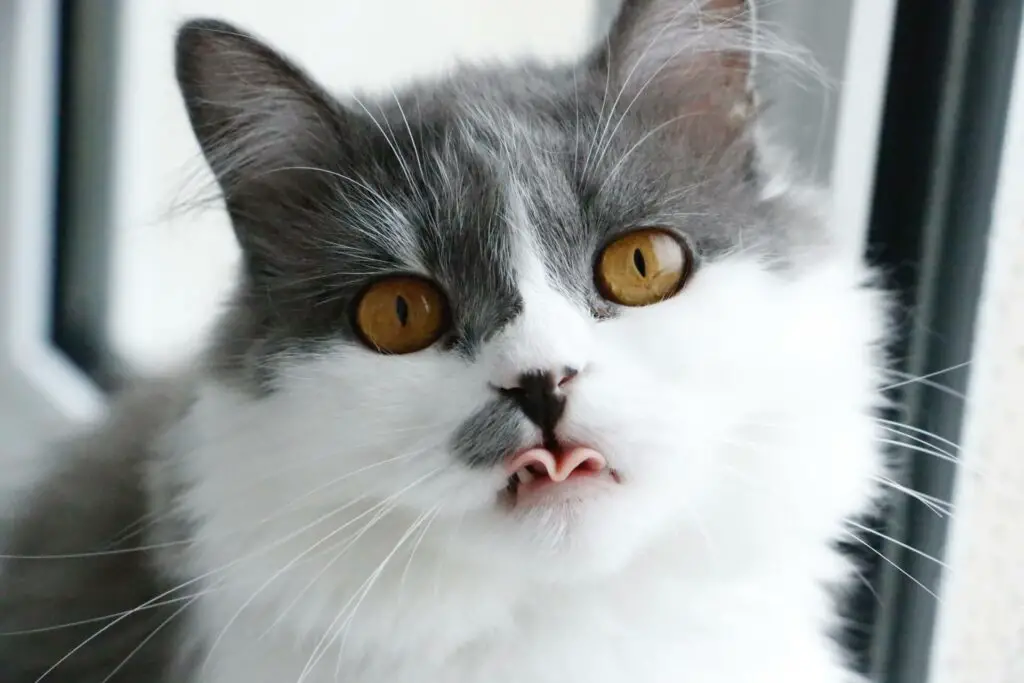
Once a cat reaches adulthood, basically, at a year old, not much changes for a few years. They will probably still be very active until they reach about 4 or 5 and they may fall into a lazier lifestyle, which is fine and normal for a house cat.
1.Keep them moving!
However, playing with your cat and keeping them active is extremely important. Minimizing the risk of them becoming overweight or obese can help prevent diabetes and other health conditions in the future.
2.Adult Food
Once your cat is no longer a crazy little kitten you should be feeding them a balanced adult cat food. You can stick with the same brand that you were feeding before but switch to the maintenance and adult form. Providing a formula for indoor cats tends to be the recommended type from veterinarians.
Remember, cats have a tendency to gain weight, especially after kittenhood, so be sure to cut back on the quantity of food you are providing if you notice that they are looking a little chubby. If you are concerned about weight gain even with a decrease in food then you may need to call your veterinarian for some advice on what to do next.
3.Veterinary Care
Veterinary care would include yearly vaccination boosters and an exam to ensure that your cat is healthy. Weighing your cat once a year at the vet will also help keep track of any unwanted weight gain.
How To Care For Senior And Geriatric Cats
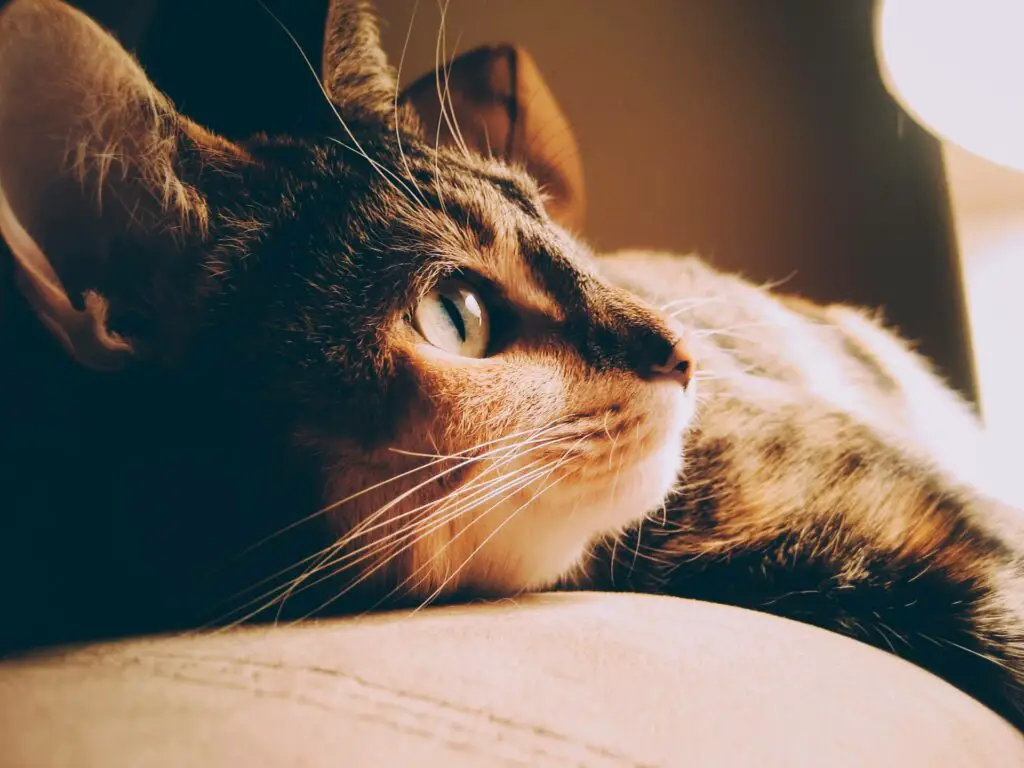
Once a cat hits the age of 11, they are considered ‘senior’ and after the age of 15, they are geriatric, according to the American Association of Feline Practitioners. Some changes may be made depending on your pet’s physical and metabolic needs.
1.More Sleep and Less Play
As cats age, they tend to do a lot more sunbathing and napping. They spend less time playing and being curious and more time lounging on the couch and eating. While these changes are normal, it may be necessary to encourage more play to keep their joints and muscles moving and burn some calories. After all, the more sedentary your cat gets, the fatter they become and that is only harder on their aging joints and body.
2.Feeding A Senior Cat
Keeping your cat healthy with an age-appropriate diet can go a long way in your pet’s longevity. While it is important to consult with your vet prior to changing your cat’s food, it is very likely that they will need a higher fiber diet with a lower calorie count. Many older pets struggle to defecate regularly and need a little help to keep things moving.
3.Veterinary Care
The older that your cat gets, the more likely it is that they will need more routine care from their veterinarian. All cats will require a dental cleaning at some point in their lives and performing preventative measures like yearly bloodwork will also tell us a lot about your cat’s overall health.
Kidney failure or renal disease is unfortunately common in older cats. Hyperthyroidism is also a very commonly seen condition in the aging feline. It is important to run routine blood work to keep an eye on kidney values, blood sugar and thyroid levels while your kitty ages.
Cat Care Guide – Hygiene Tips

Hygiene in cats is at least much easier than in dogs. They groom themselves frequently, so they rarely should require a bath. It may be necessary to perform regular ear cleanings and brush their teeth if you are feeling up to that challenge.
1.Grooming
Most cats that have short hair will not require regular grooming and brushing, but a medium or long-haired cat could be a different story. Many of these extra fluffy felines have a tendency for their hair to become matted and difficult to brush out, which may require them to be shaved at a grooming or veterinary facility.
If you have a kitty with long hair, make sure to brush them daily to prevent a matted hair coat. It will save you some money and your cat some stress from not having to go to the groomer regularly.
2.Nail trims
Trimming your cat’s nails should be a part of the routine brushing and grooming that you do with your cat. Even short-haired cats enjoy being brushed. Nail trims on the other hand may be a different story. While cats are thankfully not as dramatic as dogs are when it comes to a pedicure, it may still be a struggle at the beginning.
There are several kinds of nail clippers for cats, but just getting a traditional and cheap pair of clippers is really all that is necessary. You certainly don’t have to spend much time and money finding some. Make sure that you have Kwik Stop or Styptic Powder just in case you accidentally get too close to the quick of the nail and it starts bleeding.
This how to trim your cat’s nail article shows the appropriate length to cut your cat’s toenail at. Educating yourself so that you don’t accidentally injure or cause your kitty pain will help make nail trims a more pleasant experience in the future.
3.Soft Paws
There is a product called Soft Paws that is designed for cats that is a silicone cap that is glued over your cat’s claw, which keeps the nail blunt. This will prevent them from scratching you or your furniture and eliminate the need to trim the nails every few weeks.
Soft paws will last about 6 to 8 weeks and will simply fall off once the cat’s nail sheds, which is normal.
4.No Declawing!
Soft paws and frequent nail trims will help keep you and your house safe from your kitty’s sharp nails. These options are a great alternative to declawing your cat. While this procedure used to be much more common about 30 years ago, it is now frowned upon but is unfortunately still done at many veterinary clinics.
Declawing is the surgical removal of the nail. To put into perspective, it would be the equivalent of someone cutting off the end of your finger at the last knuckle. Declawing is painful and a completely unnecessary mutilation of cats. Many countries have outlawed this procedure, but not enough.
5.Brushing Your Cat’s Teeth
Many owners try this once and find it to be traumatizing for both parties afterward. I have had cats all my life and work in veterinary medicine. I do not have a habit of brushing their teeth. Honestly, performing yearly dental cleanings at your veterinary clinic is the best way to keep your cat’s oral hygiene in tip-top shape!
Cat Care Guide – Safety: Indoor vs Outdoor
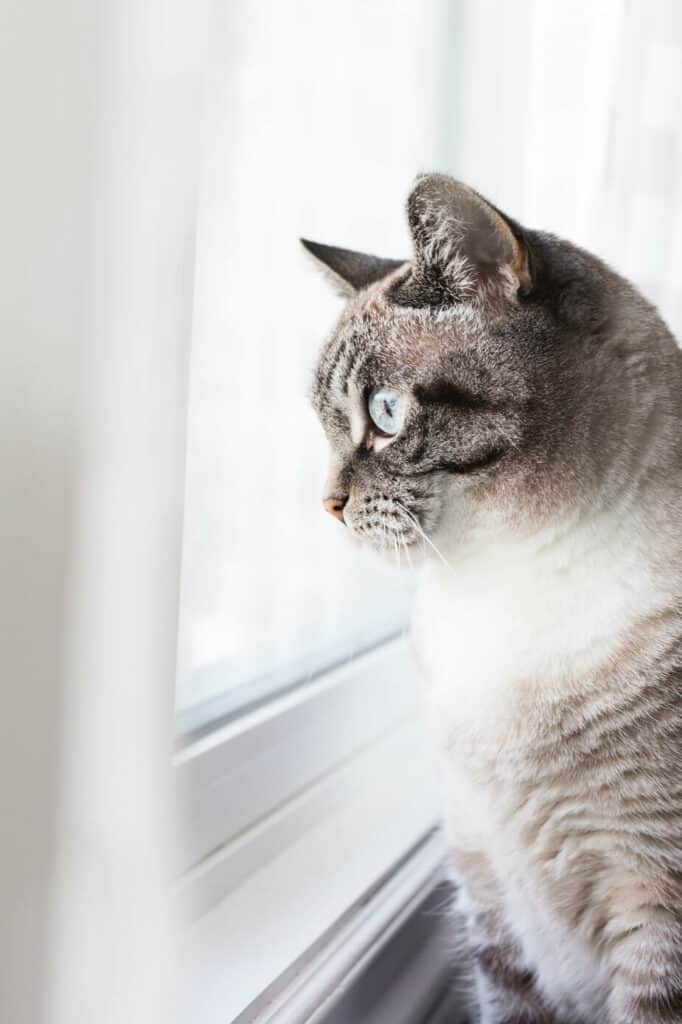
Felines as a species were clearly outdoor animals for several millennia. That is until humans started building shelters and living in them. Once we realized that cats were helpful creatures that kept away rodents and other pests, we grew attached to them, and they started to live cushier lifestyles in the warmth and safety of human homes.
Both outdoor and indoor environments have their pros and cons, but for the most part, it is clear that a cat living exclusively inside is at a much lower risk than those that rough in outside.
Indoor Cats
Many owners have chosen to keep their cats inside for their own safety and peace of mind. Cats that live in the confines of a house are at a much lower risk of danger from other animals and the elements, yet they don’t get nearly as much exercise or mental stimulation.
Plants can be a risk to your cat’s health whether they are inside or not. There are several types of flowers and greenery that are potentially toxic to your feline friend and you should do your research before bringing a new plant into the home.
Common house plants that are dangerous to your cat are poinsettias, lilies, snake plants and pothos.
Outdoor Cats
There are several cat owners that allow their mostly indoor kitty to go venture outside for a few hours a day. As long as there are not a lot of predator animals like coyotes or large birds of prey then this should be fine.
However, they are still at a large risk of injury or illness going outside, even for a few hours a day. If they get into a fight with another cat, they can contract diseases such as FIV (Feline Immunodeficiency Virus or Feline Aids), Feline Leukemia, Rabies or infected and abscessed wounds. These are all potentially life-threatening conditions that could have been avoided if they were inside.
Cat Care Guide FAQs
How To Care For A Cat In A Small Apartment

Taking care of cats in small apartments should not be a big deal. They don’t require much room for exercise and play, so as long as you provide enough toys and enrichment for your feline, cats should be content in their apartment.
If space is limited and you don’t have a lot of room for a cat tree or other vertical space, there are plenty of wall-mountable cats climbing furniture and shelves online for purchase.
These shelves are made by the brand Fukumaru which has a large amount of wall-mounted enrichment and activities for your cat to play on and nap. This can save you a lot of space in a smaller apartment while still providing your pet with plenty of fun and activity.
What Is A Special Needs Cat?
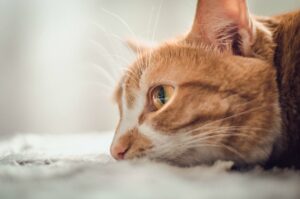
A pet that has vision issues or only one eye, is deaf or missing a limb or maybe even a health condition that requires daily medications like diabetes or hyperthyroidism can classify a cat as special needs.
There are many different conditions that can classify a cat as “special needs”. The definition of special needs means that they require a different level of care from that of a “normal” cat.
Either way, they may need some extra TLC but that doesn’t mean that they are any less of a wonderful companion that deserves all the love and affection you can offer.
How Do I Know If I Should Get A Cat?
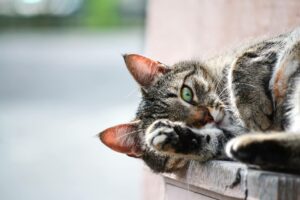
There is no real rule of thumb for knowing if you should get a cat. The answer really lies in your heart and your lifestyle. If you are looking for a companion that will cuddle you on cold nights and be there on your couch for a movie then a cat would be a great pet for you.
Because cats are lower maintenance than dogs and don’t require regular walks and exercise outdoors, then cats make the ideal pet for those than don’t have as much time and live in smaller homes or apartments.
Feline Companionship And How Cats Are Most Certainly Worth It!
While cats are well known for their independence and cat-titude, they are a companion that is more than worth their sass and curiosity.
They will bring a wholesome fulfillment to your life that you will look for again and again. Many cat enthusiasts say that they will never go a moment of their lives without having a feline companion by their side to cuddle with and sleep next to.
If you are considering adopting a cat, just know that while they are still an added responsibility, they are absolutely worth it!
I hope you liked this cat care guide! If you did pls share it or save it for later 😉
Freelance Writers’s Bio:
This article was written by freelance writer Allison Salonko .
My name is Allison and I have been a veterinary technician for 10 years. Writing and art are my passion. When I’m not working in the pet clinic I enjoy spending my time writing, painting or watching movies with my three cats, two kids and husband.